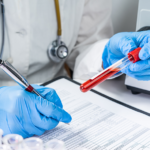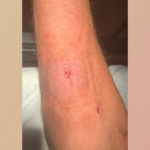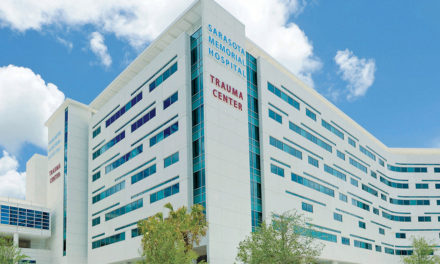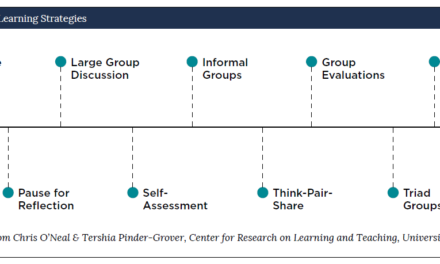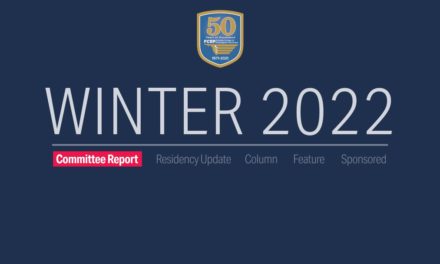False Positive HIV due to p24 Antigen and CD4 Lymphocytopenia
The likelihood of a false positive HIV test increases as the prevalence of HIV decreases and other potential explanations for the presence of p24 antigen become as prevalent as HIV. Often, patients with a false positive laboratory signature do not have other serum evidence of HIV infection. However, we will outline a case of a patient that underwent routine, ED-based HIV screening and had two false positive HIV tests on different dates (reactive screening test, negative confirmatory Ab test, no detectable virus on further nucleic acid testing), but also had a profound reduction of CD4 lymphocytes. There are several hypotheses to explain false positive screening results, including lupus, CAR T-cell therapy, rheumatoid arthritis, and other autoimmune diseases [1–3]. Some have suggested a syndromic emergence of a “Idiopathic CD4 lymphocytopenia,” while others have suggested that it is common to have CD4+ lymphocytopenia with malaria, infections, stress, burns, malnutrition, over-exercising and pregnancy [4].
A 45-year-old male with eosinophilic esophagitis (EOE) presented to the Emergency Department (ED) with left facial swelling, weakness and numbness that started one hour prior to arrival. The symptoms started on his left upper lip and spread to his nose and cheek. He denied any associated facial droop, dysarthria, dysphagia, tinnitus, auditory symptoms, blurred vision and headache. He reports no history of stroke or TIA. He denied any recent trauma, bug bites, fever or chills. He was also recovering from a prior gastrointestinal infection. His medications include oral budesonide for EOE. He has no pertinent family history and he denies tobacco, alcohol and illicit drug use. While in the ED, he developed pruritus and hives along his left lateral thigh and arm, which were resolved with solumedrol and Pepcid. He received no medications before the hives occurred. The patient had a NIH stroke scale score of 1. A computed tomography image of the brain without contrast demonstrated right frontal encephalomalacia.
While in the ED, the patient underwent routine fourth generation HIV Ab/p24 Ag on the Abbot Architect, following CDC guidelines. Follow-up confirmatory HIV-1 and HIV-2 antibody test was negative on the Bio-Rad Geenius. An order was then placed for an HIV viral load via RNA PCR on the Hologic Aptima. No virus was detected. Testing was repeated, and the same laboratory signature was observed (HIV-1/2 Ab/Ag reactive, confirmatory Ab negative, no viral load detected). The patient test results were ultimately classified as false positives.
The patient had an initial white blood count of 3.23, but his complete blood count and complete metabolic panel were otherwise unremarkable. The HIV nucleic acid test (viral load) results were not available during the ED encounter. Given the reactive screening test results and potential HIV infection, a CD4+ count was obtained. The absolute CD4+ count was 230, making up 28% of the lymphocytic count.
The patient was also admitted to the hospital for further neurological and medical evaluation. He underwent magnetic resonance imaging (MRI) of the brain without contrast that demonstrated chronic and septal malacia changes of the posterior right frontal lobe. The neurological symptoms resolved during the hospital course and the patient was discharged home.
A reactive fourth generation HIV Ab/p24 test might be obtained in the presence of a p24 antigen, presence of HIV-1 or HIV-2 antibodies or from a laboratory error. A p24 antigen may be expressed secondary to HIV or other potential autoimmune conditions. In this case, the patient tested positive twice for HIV, which fundamentally rules out the possibility of a lab error. Since the patient tested negative for both HIV-1 and HIV-2 antibodies, the only remaining reason for having a false positive result twice could be due to the presence of p24 antigen in his blood system. It is important to note that his CD4+ count was concurrently low along with having a p24 antigen, which has been reported at least once by the CDC in 1989 [9]. The patient reported by the CDC had a p24 antigen verified via western blot and a CD4+ count of 103.
These cases pose important questions for future investigation: does the p24 antigen have any association with the CD4+ counts, or are these isolated events? Do these patients simply have idiopathic CD4 lymphocytopenia and another reason for having a p24 antigen not yet discovered? We hypothesize that if we tested everyone with idiopathic CD4 lymphocytopenia for the p24 antigen, we may see more positive test results as evidenced by the patient in this case.
Disclaimer: The FOCUS Program is a public health initiative that enables partners to develop and share best practices in routine blood-borne virus (HIV, HCV, HBV) screening, diagnosis, and linkage to care in accordance with screening guidelines promulgated by the U.S. Centers for Disease Control and Prevention (CDC), the U.S. Preventive Services Task Force (USPSTF), and state and local public health departments. FOCUS funding supports HIV, HCV, and HBV screening and linkage to the first medical appointment after diagnosis. FOCUS partners do not use FOCUS awards for activities beyond linkage to the first medical appointment.
Funding: Gilead Pharmaceuticals Inc.
References:
- Esteva MH, Blasini AM, Ogly D, Rodriguez MA. False positive results for antibody to HIV in two men with systemic lupus erythematosus. Ann Rheum Dis Published Online First: 1992. doi:10.1136/ard.51.9.1071
- Ariza-Heredia EJ, Granwehr BP, Viola GM, Bhatti M, Kelley JM, Kochenderfer J, et al. False- positive HIV nucleic acid amplification testing during CAR T-cell therapy. Diagn Microbiol Infect Dis Published Online First: 2017. doi:10.1016/j.diagmicrobio.2017.05.016
- Li YC, Yang F, Ji XY, Fang ZJ, Liu J, Wang Y. False human immunodeficiency virus test results associated with rheumatoid factors in rheumatoid arthritis. Chinese Med Sci J Published Online First: 2014. doi:10.1016/S1001-9294(14)60036-5
- US Preventive Services Task Force (USPSTF). Screening for HIV Infection: US Preventive Services Task Force Recommendation Statement. JAMA. 2019;321(23):2326-2336. doi:10.1001/jama.2019.6587
- Centers for Disease Control and Prevention. False-Positive HIV Test Results. 2018; :1–2.
- Ollé-Goig JE, Ramírez J, Cervera C, Miró JM. Profound reduction of CD4+ lymphocytes without HIV infection: Two cases from the horn of Africa. Afr Health Sci Published Online First: 2012. doi:10.4314/ahs.v12i3.13
- Zonios D, Sheikh V, Sereti I. Idiopathic CD4 lymphocytopenia: a case of missing, wandering or ineffective T cells. Arthritis Res. Ther. 2012. doi:10.1186/ar4027
- Brooks JP, Ghaffari G. Idiopathic CD4 lymphocytopenia. Allergy Asthma Proc Published Online First: 2016. doi:10.2500/aap.2016.37.3992
- Unexplained CD4+ T-lymphocyte depletion in persons without evident HIV infection– United States. MMWR Morb Mortal Wkly Rep Published Online First: 1992. doi:10.1017/S0195941700015332
This article is part of the following sections:





